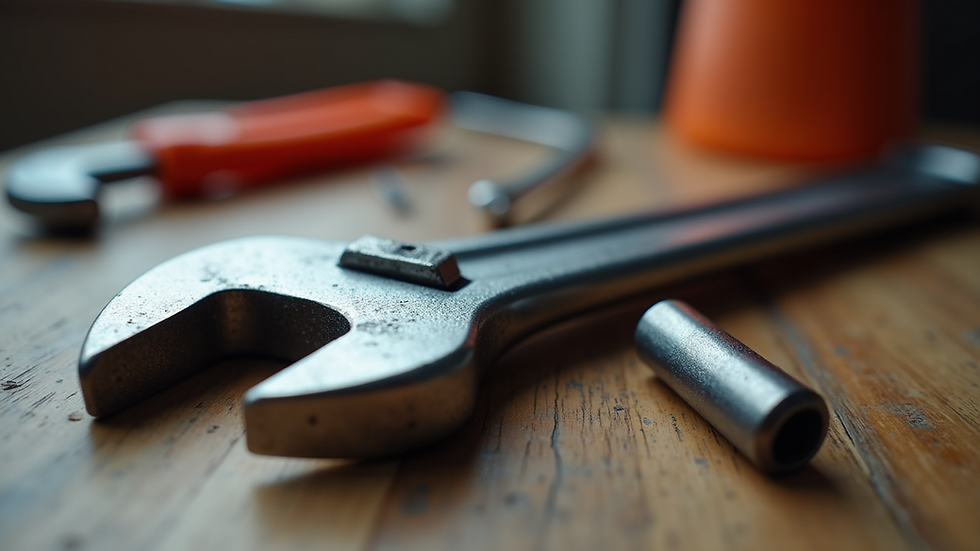How to Keep Your Home's Plumbing in Top Shape
- Leeds Emergency Plumbers
- Sep 29
- 4 min read
Maintaining your home's plumbing system is essential for comfort, safety, and avoiding costly repairs. A well-functioning plumbing system ensures clean water supply, efficient drainage, and prevents water damage. This guide will walk you through practical steps to keep your residential plumbing in excellent condition.
Understanding Residential Plumbing Systems
Residential plumbing involves a network of pipes, fixtures, and appliances that deliver water to your home and remove wastewater. It includes water supply lines, drains, vents, and fixtures like sinks, toilets, and showers. Knowing the basics helps you identify issues early and take preventive measures.
Common materials used in residential plumbing include copper, PVC, and PEX pipes. Each has its advantages and maintenance needs. For example, copper pipes are durable but can corrode over time, while PVC is resistant to corrosion but can crack in freezing temperatures.
Regular inspection of visible pipes and fixtures can reveal leaks, corrosion, or blockages. Early detection prevents minor problems from escalating into major repairs.

Close-up view of copper plumbing pipes under a sink
Essential Tips for Residential Plumbing Care
Proper care of your home's plumbing system involves simple habits and routine checks. Here are some actionable tips:
Avoid pouring grease or oil down the drain. These substances solidify and cause blockages.
Use drain strainers to catch hair and debris, especially in bathrooms.
Check for leaks regularly. Even small drips can waste water and damage structures.
Insulate pipes in colder months to prevent freezing and bursting.
Know the location of your main water shut-off valve to quickly stop water flow in emergencies.
Additionally, be mindful of what you flush. Items like wipes, sanitary products, and cotton balls can clog pipes and damage septic systems.
Scheduling professional inspections every year or two can help maintain your system’s health. Experts can spot hidden issues and perform necessary maintenance.

Eye-level view of a plumber inspecting a residential water pipe
What is Plumbing System Maintenance?
Plumbing system maintenance refers to the regular care and servicing of your home's plumbing components to ensure they function efficiently. This includes cleaning drains, checking for leaks, testing water pressure, and servicing appliances like water heaters.
Maintenance can be divided into preventive and corrective:
Preventive maintenance involves routine tasks such as flushing water heaters, cleaning aerators, and inspecting pipes.
Corrective maintenance addresses problems like leaks, clogs, or broken fixtures as they arise.
One key aspect of plumbing system maintenance is ensuring that your water pressure is within the recommended range (usually 40-60 psi). High pressure can strain pipes and fixtures, while low pressure may indicate blockages or leaks.
Regularly flushing your water heater removes sediment buildup, improving efficiency and extending its lifespan. Similarly, cleaning faucet aerators and showerheads prevents mineral deposits from reducing water flow.
For those interested in more detailed guidance, residential plumbing maintenance services offer expert advice and professional support.

High angle view of a water heater being flushed
Common Plumbing Problems and How to Fix Them
Even with good care, plumbing issues can occur. Knowing how to handle common problems can save time and money.
Leaky Faucets
A dripping faucet wastes water and increases bills. Usually, worn-out washers or seals cause leaks. Fixing this involves turning off the water supply, disassembling the faucet, and replacing the faulty parts.
Clogged Drains
Slow or blocked drains are often caused by hair, grease, or foreign objects. Use a plunger or a drain snake to clear minor clogs. Avoid chemical drain cleaners as they can damage pipes.
Running Toilets
A running toilet wastes water continuously. The problem often lies in the flapper valve or fill valve. Replacing these inexpensive parts usually solves the issue.
Low Water Pressure
Low pressure can result from pipe corrosion, leaks, or clogged aerators. Cleaning aerators and checking for leaks are good first steps. If the problem persists, consult a plumber.
Burst Pipes
In cold weather, pipes can freeze and burst. To prevent this, insulate exposed pipes and keep your home heated. If a pipe bursts, turn off the main water supply immediately and call a professional.
DIY Maintenance vs Professional Help
While many plumbing tasks can be handled by homeowners, some require professional expertise. Simple maintenance like cleaning drains, checking for leaks, and replacing washers can be DIY projects.
However, complex issues such as pipe replacement, water heater repairs, or persistent leaks should be left to licensed plumbers. Attempting complicated repairs without proper knowledge can cause more damage.
Regular professional inspections complement your DIY efforts. Experts can perform thorough checks, use specialized tools, and provide advice tailored to your home’s plumbing system.
Keeping Your Plumbing System Efficient and Safe
Maintaining your plumbing system not only prevents problems but also improves water efficiency and safety. Here are some final tips:
Install water-saving fixtures like low-flow showerheads and dual-flush toilets.
Monitor your water bills for sudden increases that may indicate leaks.
Avoid using your toilet as a trash bin to prevent clogs.
Schedule regular maintenance checks with trusted professionals.
By following these guidelines, you can enjoy a reliable plumbing system that supports your daily needs without unexpected disruptions.

Close-up view of a modern water-saving showerhead
Taking care of your home's plumbing is an ongoing process. With attention and timely action, you can keep your residential plumbing in top shape for years to come.






Comments